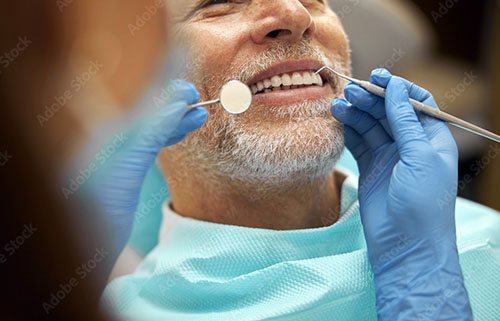
Although we usually think of emergencies at sea in terms of fire, capsizing, flooding or personal injury, a dental problem can also cut short a fishing opening or even require an emergency medivac.
Let’s take a look at some common dental problems and how to deal with them onboard.
Infections
Infections involve either the pulp tissue inside the tooth or the gum tissue around the tooth. Signs and symptoms can include loose teeth or sensitivity to hot, cold or biting. Redness or swelling in the gum tissue or on the face occur in the later stages and should be treated promptly by a dentist.
Treatment at sea could include oral antibiotics; have an in-date supply onboard before problems arise. They may be successful in somewhat suppressing the infection, but won’t cure the problem. A gum swelling could be pricked open with a needle sterilized in a flame, but it will return.
Any at-sea treatment of a dental infection is just a stop-gap procedure; cut your trip short and see a dentist immediately to preserve your health.
A medivac can be considered if swelling of the face occurs. Untreated dental infections can result in blindness or death and should not be taken lightly.
Dental Injuries
Teeth can be loosened or broken due to a traumatic incident. A tooth loosened by a blow should be pressed back into place by a dentist. A tooth that has been completely knocked out can be saved by reinsertion into its socket within 30 minutes. Do not touch the root.
The cells responsible for reattachment all live on the root surface. Hold it in place during travel to the dentist. If not able to reinsert, preserve those cells by holding the tooth in the mouth between cheek and gum. Alternatively, preserve it in a glass of milk before arriving at the dental office.
The severity of a broken tooth depends on the location of the fracture. If the break occurs in just the enamel, it will feel rough but can be easily repaired. A fracture that involves the underlying dentin will be sensitive initially to cold, but can usually be saved if treated in a timely manner.
However, fractures going through the dentin and into the nerve inside the tooth will need treatment by a dentist as soon as possible. The pulp tissue will appear as a red dot on the surface of the fracture. Serious fractures will cause the fractured piece to loosen, but still be attached to the gum tissue.
Treatment by a dentist should be sought immediately.
Other Injuries
Bleeding anywhere in the mouth can be controlled as you would in the rest of the body: by applying pressure. A moistened cotton gauze strip, a moist towel or even a tea bag can be placed over the bleeding area and bitten to place.
A century-old toothache remedy is oil of clove, aka eugenol. Needing this is a sign that a trip to the dentist is necessary before infection occurs. See above.
A lost crown can sometimes be re-cemented by a dentist if the underlying tooth structure is still sound. Replace the crown and bite it to place during the day, leave it out at night to avoid swallowing it during sleep. It may be held in place during the day with temporary dental cement available at the drugstore. Do not use superglue.
A trip to the dentist is necessary to securely bond it back into place.
A broken denture can seldom be repaired successfully at sea. Again: do not use superglue. Commonly used denture adhesives may be helpful before seeing your dentist.
If a filling falls out, the defect may be temporarily plugged with a soft wax such as beeswax. Just place a pea-sized piece over the area and thumb it in. See your dentist promptly to avoid infection.
What if you need pain relief? Never take opioids at sea; you need to be on your A-game at all times. A combination of Tylenol and Advil, as long as neither has been ruled out by your physician, is as effective as medium-strength narcotics, with no opioid side effects. Use extra strength Tylenol and two-to-four Advil, taken all at once, no more than three times per day.
Conclusion
All of these remedies are temporary, but some of these onboard procedures may allow you to finish your trip. Prevention is the best strategy; a visit to the dentist is necessary to preserve health.
Brush and floss each night before bed and visit your dentist and hygienist regularly to keep your mouth healthy.
Items to include in your onboard first aid kit could include oil of cloves, beeswax, oral antibiotics prescribed by your dentist, Advil/Tylenol, denture adhesive and a temporary dental cement.
Keep the topside up.
Tom Jacobsen is a longtime local dentist in Sitka, Alaska. He is a member of the American Dental Association and the Academy of General Dentistry. He is also a member of the Academy of GP Orthodontics and is a past president of that national organization. He has been trained in oral sedation by DOCS Education, and in advanced root canal therapy by Dental Education Laboratories. He joined Sitka Dental Clinic in 1977 and has been practicing there ever since.
